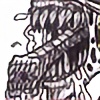HOME | DD
 Rexyfan93 — Dynamosaurus (remodel 1)
by-nc-nd
Rexyfan93 — Dynamosaurus (remodel 1)
by-nc-nd

Published: 2021-09-30 22:21:39 +0000 UTC; Views: 16860; Favourites: 173; Downloads: 10
Redirect to original
Description
The name of this beast is based off of the original naming of tyrannosaurus rex, but the name tyrannosaurus stayed and Dynamosaurus faded away until now. I was inspired by the way the name comes up as dynamic lizard and Abelisaurs just kind of fit with them. Yes the female skull is just a Majungasaurus skull but I wanted the males to have a more spiky look and the females have a flat head with just that horn on the top.
Dynamosaurus (Dynamic Lizard)
· Height: 10-12 ft.
· Length: 38-40 ft.
· Diet: Carnivore
· Family: Abelisauridae
· Subfamily: Majungasaurinae
· Lifestyle: mid-sized predator/ scavenger
Description: Like other abelisauroids, Dynamosaurus was a bipedal predator with a short snout. Although the forelimbs are not completely known, they were very short, while the hind limbs were longer and very stocky. It can be distinguished from other abelisauroids by its wider skull, the very rough texture and thickened bone on the top of its snout, the skull was covered in jagged bumps that formed horns which was mostly on males while the females had a much smoother single horned head. The maximum weight of this beast was around 5-6 tons almost as much as a Tyrannosaurus and just as big as the ancestor of Theosaurus rex. The hindlimbs of Dynamosaurus was stocky but surprisingly longer than their ancestors, which was Majungasaurus, these longer legs allow them to chase their prey down rather than short burst of speeds they had a more prolonged chase.
Habitat: The habitat range of this beast is much further than Theosaurus found on the western side of Ternova as well as the east side but on the coastline away from the large desert. They have been known to venture to inland islands that are a mile within sight and preying on the inhabitants but can’t swim any further than islands that close. Even near the great interior lake they can be found around the it and to the far north, but not in colder regions.
Ecology: These vary between island and coastal subtropical regions, and semi-arid plains. They also like jungles, forests, plains, grasslands, game trails, scrublands, wetlands lake and rivers. Dynamosaurus inhabits both forests and plains, roaming wherever prey may gather. It tends to avoid dense jungle and mountain ranges owing to limitations in maneuverability. This is true due to their increase in size their maneuverability has become lackluster compared to other abelisauroids on earth and Ternova. The others are more built for speed and maneuverability since most of their preys are quick on their feet and tend to be out in the open where visibility is key to getting a meal.
Social Structure: The social structure of Dynamosaurus is very different from other carnivores on Ternova. During the mating season males claim a territory and tend to be aggressive towards one another. Males will display their head ornaments to show health and strength, males will butt heads with each other and will bite the other male to show dominance over the other till one gives up or dies. Breeding pairs have amazing love where males regularly bring females fresh kills as gifts. But unlike Theosaurus rex that mate for life Dynamosaurus do not mate for life and tend to separate after the young are born. Once the young are born the female takes care of them for a few years till they need to venture off on their own before they become food for their mother.
Cannibalism: Numerous bones of Dynamosaurus have been discovered bearing tooth marks identical to those found on sauropod bones from the same localities. These marks have the same spacing as teeth in Dynamosaurus jaws, are of the same size as Dynamosaurus teeth, and contain smaller notches consistent with the serrations on those teeth. This tends to happen when females attack others forgetting to close to their young and need food as well as the mothers and other adults preying on the young.
Fun Fact: Abelisauroids, especially Dynamosaurus, may instead have been adapted for a feeding strategy more like modern felids, with short and broad snouts, that bite once and hold on until the prey is subdued. Dynamosaurus had an even broader snout than other abelisauroids, and other aspects of its anatomy. Their forelimbs are the smallest of all carnivores on Ternova which is common with Abelisauroids that are more about the bite like tyrannosaurus, measuring up to 3-4 feet in length that maybe large to us but it is small compared to other dinosaurs.
Related content
Comments: 6

👍: 0 ⏩: 1

👍: 1 ⏩: 1

👍: 0 ⏩: 0

👍: 0 ⏩: 1

👍: 1 ⏩: 1

👍: 0 ⏩: 0

















